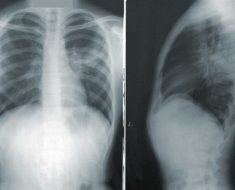Transcranial photobiomodulation (tPBM), a noninvasive laser light therapy, can improve short-term memory in young adults when applied to the right prefrontal cortex (PFC) of the brain, new research suggests.
Investigators compared the effect of 1064 nm of tPBM delivered over a 12-minute session to the right PFC vs three other treatment arms: delivery of the same intervention to the left PFC, delivery of the intervention at a lower frequency, and a sham intervention.
All participants were shown a series of items prior to the intervention and asked to recall them after the intervention. Those who received tPBM 1064 nm to the right PFC showed a superior performance of up to 25% in the memory tasks compared with the other groups.
Patients with attention-related conditions, such as attention deficit hyperactivity disorder, “could benefit from this type of treatment, which is safe, simple, and non-invasive, with no side effects,” co-investigator Dongwei Li, a visiting PhD student at the Centre for Human Brain Health, University of Birmingham, United Kingdom, said in a news release.
The findings were published online December 2 in Science Advances.
Differing Wavelengths
The researchers note that “in the past decades,” non-invasive brain stimulation technology using transcranial application of direct or alternating electrical or magnetic fields “has been proven to be useful” in the improvement of working memory (WM).
When applied to the right PFC, tPBM has been shown to improve accuracy and speed of reaction time in WM tasks and improvements in “high-order cognitive functions,” such as sustained attention, emotion, and executive functions.
The investigators wanted to assess the impact of tPBM applied to different parts of the brain and at different wavelengths. They conducted four double-blind, sham-controlled experiments encompassing 90 neurotypical college students (mean age, 22 years). Each student participated in only one of the four experiments.
All completed two different tPBM sessions, separated by a week, in which sham and active tPBM were compared. Two different types of change-detection memory tasks were given: one requiring participants to remember the orientation of a series of items before and after the intervention and one other requiring them to remember the color of the items (experiments 1 and 2).
A series of follow-up experiments focused on comparing different wavelengths (1064 nm vs 852 nm) and different stimulation sites (right vs left PFC; experiments 3 and 4).
EEG recordings were obtained during the intervention and the memory tasks.
Each experiment consisted of one active tPBM session and one sham tPBM session, with sessions consisting of 12 minutes of laser light (or sham) intervention. These sessions were conducted on the first and the seventh day; then, on the eighth day, participants were asked to report (or guess) which session was the active tPBM session.
Stimulating Astrocytes
Results showed that, compared with sham tPBM, there was an improvement in WM capacity and scores by the 1064 nm intervention in the orientation as well as the color task.
Participants who received the targeted treatment were able to remember between four and five test objects, whereas those with the treatment variations were only able to remember between three and four objects.
Table. Orientation working memory task vs Color memory task
| Experiment (task) | Difference) | P Value) | Mean tPBM Effect(active minus sham)) |
|---|---|---|---|
| 1 (orientation)
|
t22 = 2.841
|
.009
|
0.186 ± 0.065
(BF10 = 5.212, Cohen’s d =0.568) |
| 2 (color)
|
t17 = 2.760
|
.013
|
0.188 ± 0.051
(BF10 = 20.336, Cohen’s d = 0.651) |
“These results support the hypothesis that 1064 nm tPBM on the right PFC enhances WM capacity,” the investigators write.
They also found improvements in WM in participants receiving tPBM vs sham regardless if their performance in the WM task was at a low or high level. This finding held true in both the orientation and the color tasks.
“Therefore, participants with good and poor WM capacity improved after 1064 nm tPBM,” the researchers note.
In addition, participants were unable to guess or report whether they had received sham or active tPBM.
EEG monitoring showed changes in brain activity that predicted the improvements in memory performance. In particular, 1064 tPBM applied to the right PFC increased occipitoparietal contralateral delay activity (CDA), with CDA mediating the WM improvement.
This is “consistent with previous research that CDA is indicative of the number of maintained objects in visual working memory,” the investigators write.
Pearson correlation analyses showed that the differences in CDA set-size effects between active and sham session “correlated positively” with the behavioral differences between these sessions. For the orientation task, the r was 0.446 (P < .04); and for the color task, the r was .563 (P < .02).
No similar improvements were found with the 852 nm tPBM.
“We need further research to understand exactly why the tPBM is having this positive effect,” co-investigator Ole Jensen, PhD, professor in translational neuroscience and co-director of the Centre of Human Brain Health, said in the release.
“It’s possible that the light is stimulating the astrocytes — the powerplants — in the nerve cells within the PFC, and this has a positive effect on the cells’ efficiency,” he noted.
Jensen added that his team “will also be investigating how long the effects might last. Clearly, if these experiments are to lead to a clinical intervention, we will need to see long-lasting benefits.”
Beneficial Cognitive, Emotional Effects
Commenting for Medscape Medical News, Francisco Gonzalez-Lima, PhD, professor in the Department of Psychology, University of Texas at Austin, called the study “well-done.”
Gonzalez-Lima was one of the first researchers to demonstrate that 1064 nm transcranial infrared laser stimulation “produces beneficial cognitive and emotional effects in humans, including improving visual working memory,” he said.
The current study “reported an additional brain effect linked to the improved visual working memory that consists of an EEG-derived response, which is a new finding,” noted Gonzales-Lima, who was not involved with the new research.
He added that the same laser method “has been found by the Gonzalez-Lima lab to be effective at improving cognition in older adults and depressed and bipolar patients.”
The study was supported by the National Natural Science Foundation of China, the Ministry of Science and Technology of the People’s Republic of China, and the National Defence Basic Scientific Research Program of China. The investigators and Gonzalez-Lima report no relevant financial relationships.
Sci Adv. Published online December 2, 2022. Full article
Batya Swift Yasgur, MA, LSW is a freelance writer with a counseling practice in Teaneck, NJ. She is a regular contributor to numerous medical publications, including Medscape and WebMD, and is the author of several consumer-oriented health books as well as Behind the Burqa: Our Lives in Afghanistan and How We Escaped to Freedom (the memoir of two brave Afghan sisters who told her their story).
For more Medscape Psychiatry news, join us on Twitter and Facebook
Source: Read Full Article





